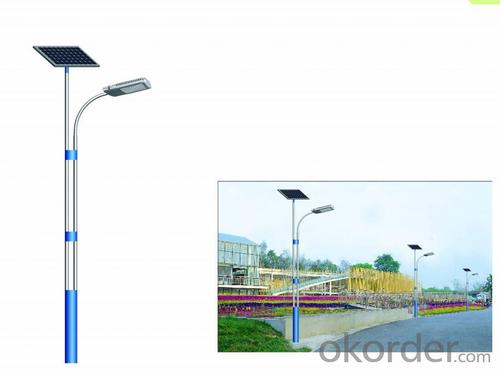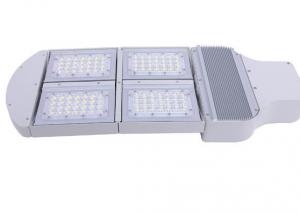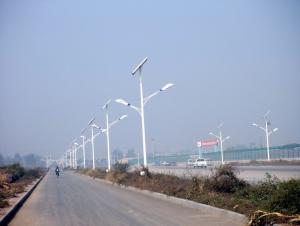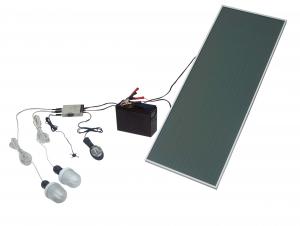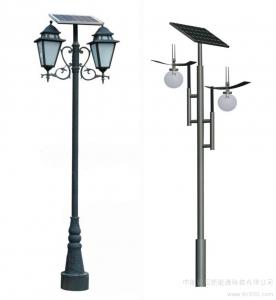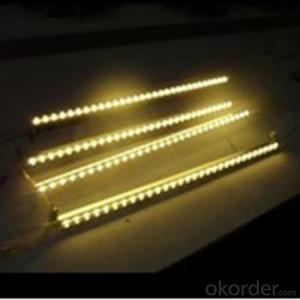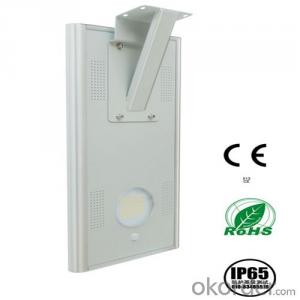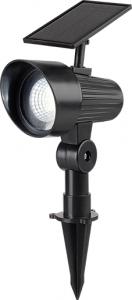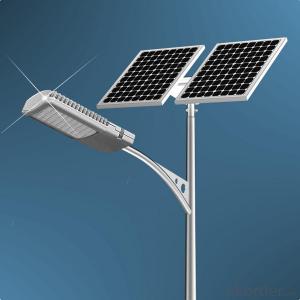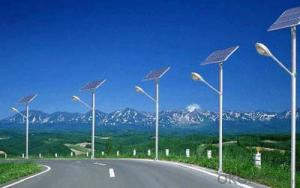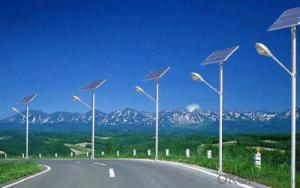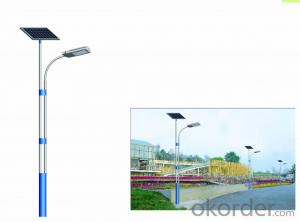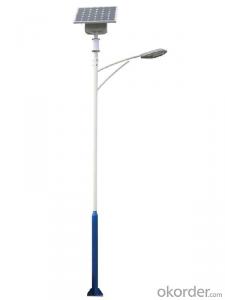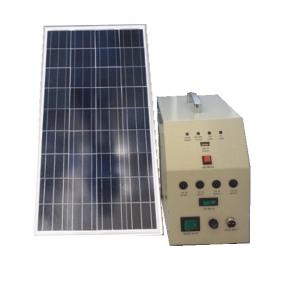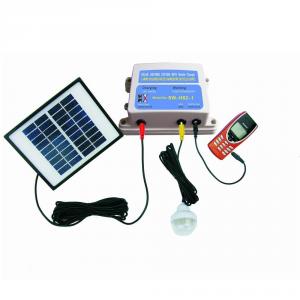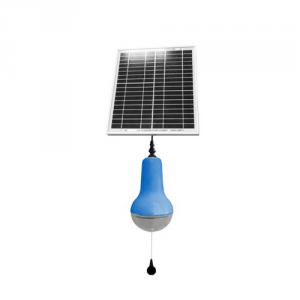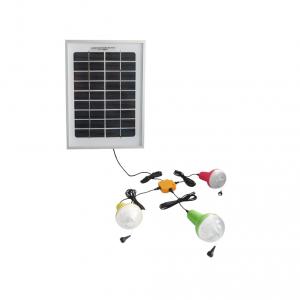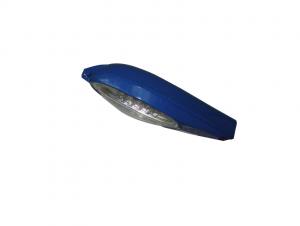Solar Light Fence Caps - Off Grid New Energy Solar Product 025nm
- Loading Port:
- Shanghai
- Payment Terms:
- TT OR LC
- Min Order Qty:
- 1 watt
- Supply Capability:
- 5000 watt/month
OKorder Service Pledge
OKorder Financial Service
You Might Also Like
1, Product desciption
Inverter circuits designed to produce a variable output voltage range are often used within motor speed controllers.
The DC power for the inverter section can be derived from a normal AC wall outlet or some other source. Control and feedback circuitry is used to adjust the final output of the inverter section which will ultimately determine the speed of the motor operating under its mechanical load.
Motor speed control needs are numerous and include things like: industrial motor driven equipment, electric vehicles, rail transport systems, and power tools. (See related: variable-frequency drive ) Switching states are developed for positive, negative and zero voltages as per the patterns given in the switching Table.
The generated gate pulses are given to each switch in accordance with the developed pattern and thus the output is obtained.
Solar power is energy from the sun. "Solar" is the Latin word for "sun" and
And Powerful source of energy. Without it, there will be no life.
Solar energy is considered as a serious source of energy for many years
of the vast amounts of energy that is made freely available, if harnessed by modern technology.
A magnifying glass can be used to heat up a small amount of water.
The short piece of copper tube is sealed at one end and filled with water.
And magnifying glass is then used to warm up the pipe.
Using more than one magnifying glass will increase the temperature more rapidly.
2, Features of the product
Inverters convert low frequency main AC power to higher frequency for use in induction heating.
To do this, AC power is first rectified to provide DC power. The inverter then changes the DC power to high frequency AC power. Due to the reduction in the number of DC Sources employed, the structure becomes more reliable and the output voltage has higher resolution due to an increase in the number of steps so that the reference sinusoidal voltage can be better achieved.
This configuration has recently become very popular in AC power supply and adjustable speed drive applications. This new inverter can avoid extra clamping diodes or voltage balancing capacitors. There are three kinds of level shifted modulation techniques, namely: 1,High and stable conversion efficienly based on over 4 years professional experience
2 ,High reliability with guaranteed +/-10% output power tolerance
3,Proven materials,tempered front glass,and a sturdy anodized aluminum frame allow modules to operate reliably in multiple mountily configurations
4,Combination of high efficicncy and attractive appearance
The first thing to figure out is the length of road in need of street lights.
This can be a small entrance road only a couple hundred of feet long to miles of streets through an area. Does the area currently have any type of lighting available.
What is the reason for needing street lights in this area
Is the electrical grid already nearby or would you need to call in the power company to bring in electrical lines.
If the electric needs to be brought to the area, how much is this going to cost? Depending on how far the grid electric is from the location of the needed lighting, this can be quite expensive.
How much lighting is needed on the street? Do the lights need to be dark sky compliant.
Do the street lights need to run from dusk to dawn or for only a specified number of hours at night.
Are the street lights able to dim in the middle of the night and still provide enough lighting.
These questions need to be answered before you can decide on how many lights you will need to complete the project.
Grid-tie inverters that are available on the market today use a number of different technologies. The inverters may use the newer high-frequency transformers, conventional low-frequency transformers, or no transformer. Instead of converting direct current directly to 120 or 240 volts AC, high-frequency transformers employ a computerized multi-step process that involves converting the power to high-frequency AC and then back to DC and then to the final AC output voltage.
Historically, there have been concerns about having transformerless electrical systems feed into the public utility grid. The concerns stem from the fact that there is a lack of galvanic isolation between the DC and AC circuits, which could allow the passage of dangerous DC faults to be transmitted to the AC side. Since 2005, the NFPA's NEC allows transformerless (or non-galvanically) inverters. The VDE 0126-1-1 and IEC 6210 also have been amended to allow and define the safety mechanisms needed for such systems. Primarily, residual or ground current detection is used to detect possible fault conditions. Also isolation tests are performed to insure DC to AC separation.
Many solar inverters are designed to be connected to a utility grid, and will not operate when they do not detect the presence of the grid. They contain special circuitry to precisely match the voltage and frequency of the grid.
A charge controller may be used to power DC equipment with solar panels. The charge controller provides a regulated DC output and stores excess energy in a battery as well as monitoring the battery voltage to prevent under/over charging. More expensive units will also perform maximum power point tracking. An inverter can be connected to the output of a charge controller to drive AC loads.
3, Detailed Specification
Data Sheet of High Quality Solar Controller Tracer-1210RN
ModelTracer-1210RN
Rated system voltage12/24V auto work
Rated battery current10A
Rated load current10A
Max.battery voltage32V
Max.PV open circuit voltage100VDC
Max.PV input power12V 130W;24V 260W
Self-consumption<10ma(24v)< span="">
Charge Circuit Voltage<=0.26v< span="">
Discharge Circuit Voltage Drop<=0.15v< span="">
CommunicationTTL232/8 pin RJ45
Temp/compensation-30mV/℃/12V(25℃)
Working temperature-35℃~+55℃
Storage temperature range-35℃~+55℃
4, Product Image
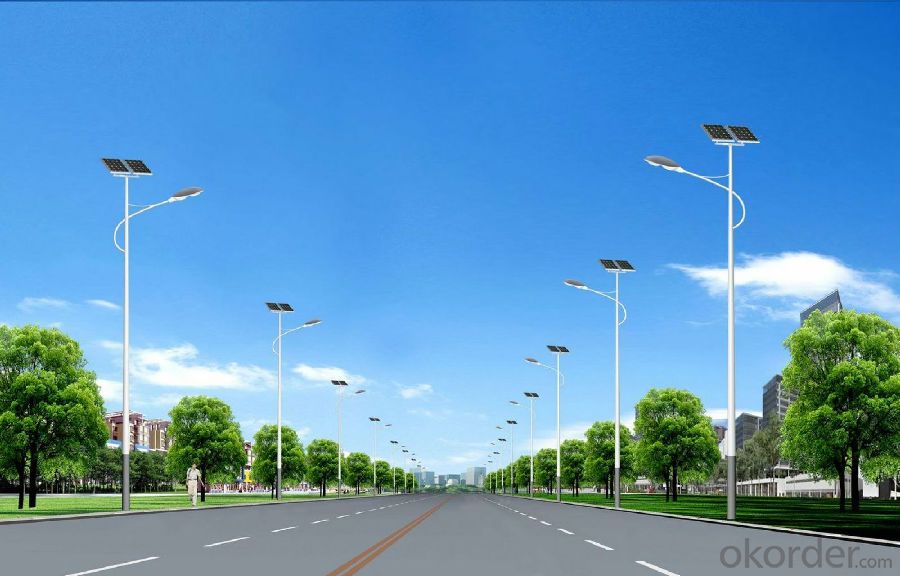
- Q: What is the warranty on solar lights?
- The warranty on solar lights can vary depending on the manufacturer and model, but it typically ranges from 1 to 5 years.
- Q: Can solar lights be used for outdoor restaurant or café lighting?
- Yes, solar lights can be used for outdoor restaurant or café lighting. They are a sustainable and cost-effective option as they draw energy from the sun and do not require electricity. Additionally, solar lights come in various designs and styles, allowing for customization to match the ambiance of the outdoor space.
- Q: Can solar lights be used for outdoor weddings or event venues?
- Yes, solar lights can definitely be used for outdoor weddings or event venues. They are a great eco-friendly option as they rely on solar energy to power up and illuminate the surroundings. Solar lights come in various designs, sizes, and colors, providing flexibility to match the theme and ambiance of any outdoor event. Additionally, they are easy to install, require minimal maintenance, and can last throughout the duration of the event without the need for constant monitoring or power supply.
- Q: Can solar lights be used in agricultural applications?
- Yes, solar lights can be used in agricultural applications. They can provide reliable and sustainable lighting solutions for various agricultural activities, such as illuminating pathways, livestock enclosures, or farm equipment. Solar lights eliminate the need for electricity grid connections and reduce operational costs, making them an environmentally friendly and cost-effective option for farmers. Additionally, solar lights can be easily installed and maintained in remote areas, improving safety and productivity in agricultural operations.
- Q: Can solar lights be used for emergency signaling?
- Certainly, emergency signaling can be accomplished using solar lights. LED bulbs, which are incorporated into solar lights, possess the ability to emit bright light that can be easily seen from a considerable distance. By configuring them to flash or blink, a conspicuous signal for seeking assistance or during emergency scenarios can be effortlessly established. Moreover, solar lights are frequently designed to withstand harsh weather conditions, possess durability, and have an extended battery life, rendering them a dependable choice for emergency signaling, particularly in remote or open-air areas. Furthermore, owing to their dependence on renewable solar energy, solar lights eliminate the necessity for electricity or batteries, thereby presenting a sustainable and cost-efficient solution for emergency signaling.
- Q: Can solar lights be used in areas with high levels of air pollution from factories or power plants?
- Yes, solar lights can still be used in areas with high levels of air pollution from factories or power plants. However, the efficiency and performance of the solar lights may be affected to some extent due to reduced sunlight reaching the solar panels. Regular cleaning and maintenance of the solar panels will be necessary to ensure optimal functionality.
- Q: How do you ensure proper charging of solar lights during winter months?
- During winter months, it is important to ensure proper charging of solar lights by following a few simple steps. Firstly, positioning the solar lights in an area that receives maximum sunlight exposure is crucial. Clear any obstacles like snow, leaves, or debris that may block the sunlight from reaching the solar panels. Secondly, regularly clean the solar panels to remove any dirt or frost buildup that can hinder the absorption of sunlight. Additionally, consider adjusting the angle or direction of the solar lights to optimize their exposure to the sun. Lastly, if the weather conditions are consistently cloudy or snowy, it may be helpful to bring the solar lights indoors during the day to charge them using artificial light sources. By taking these measures, you can ensure proper charging and optimal performance of solar lights even during the winter months.
- Q: Can solar lights be used for outdoor retail displays?
- Yes, solar lights can be used for outdoor retail displays. They are an eco-friendly and cost-effective option for illuminating products or signage in outdoor retail areas. Solar lights can provide sufficient brightness and visibility, enhancing the overall aesthetics of the display while also being energy-efficient.
- Q: Can solar lights be used for signage lighting?
- Yes, solar lights can be used for signage lighting. Solar-powered lights are an eco-friendly and cost-effective solution for illuminating signs, as they harness sunlight during the day to charge their batteries and automatically turn on at night. These lights are easy to install and require minimal maintenance, making them a popular choice for signage lighting in remote or off-grid locations.
- Q: Can solar lights be used for illuminating outdoor gazebos and pergolas?
- Yes, solar lights can definitely be used for illuminating outdoor gazebos and pergolas. Solar lights are a great option for these structures as they require no electrical wiring, making installation quick and easy. They are powered by solar panels that absorb sunlight during the day and convert it into energy, which is stored in rechargeable batteries. When the sun sets, the batteries power the lights, providing a soft and ambient illumination to the space. Solar lights come in various designs and styles, allowing you to choose the ones that best match your gazebo or pergola. They are also environmentally friendly, as they rely on renewable energy and do not produce any greenhouse gas emissions. Overall, solar lights are a cost-effective, low-maintenance, and energy-efficient solution for illuminating outdoor gazebos and pergolas.
Send your message to us
Solar Light Fence Caps - Off Grid New Energy Solar Product 025nm
- Loading Port:
- Shanghai
- Payment Terms:
- TT OR LC
- Min Order Qty:
- 1 watt
- Supply Capability:
- 5000 watt/month
OKorder Service Pledge
OKorder Financial Service
Similar products
Hot products
Hot Searches
Related keywords



